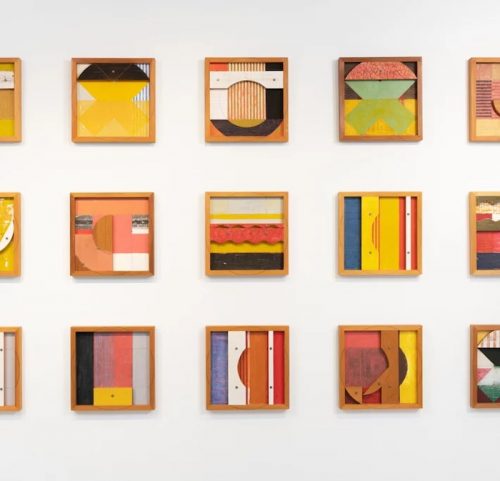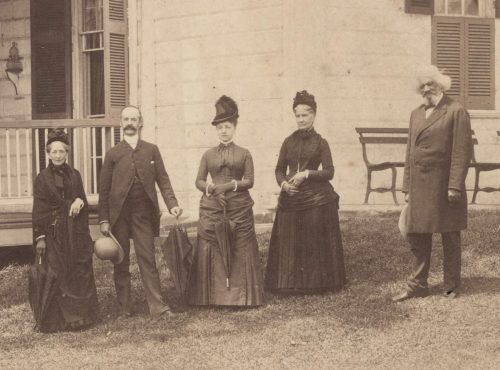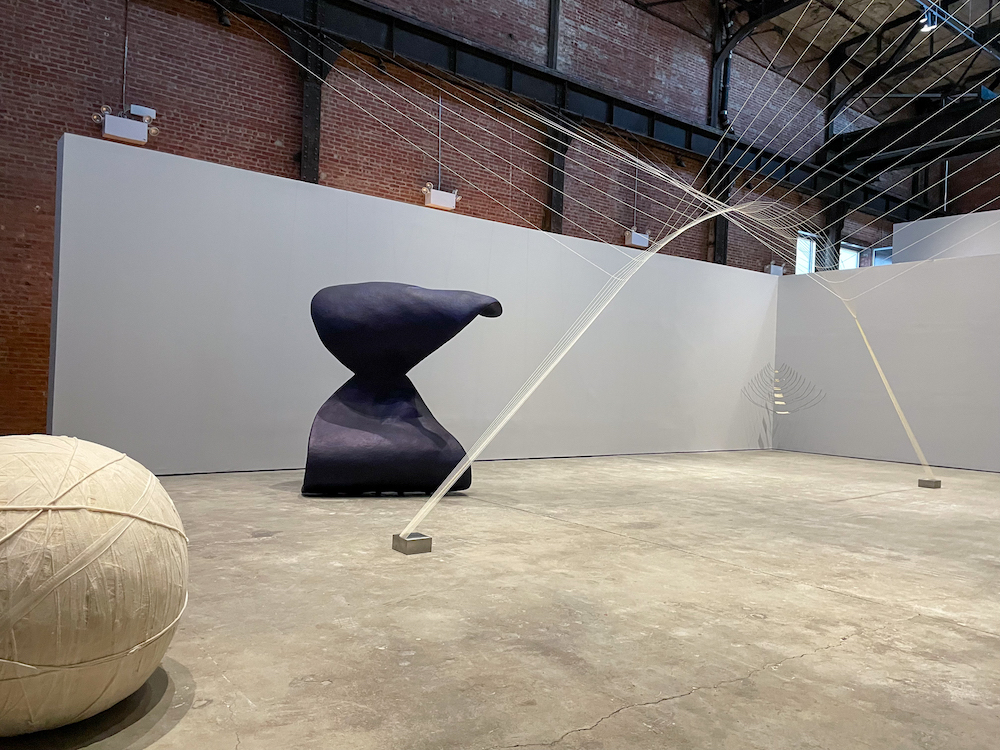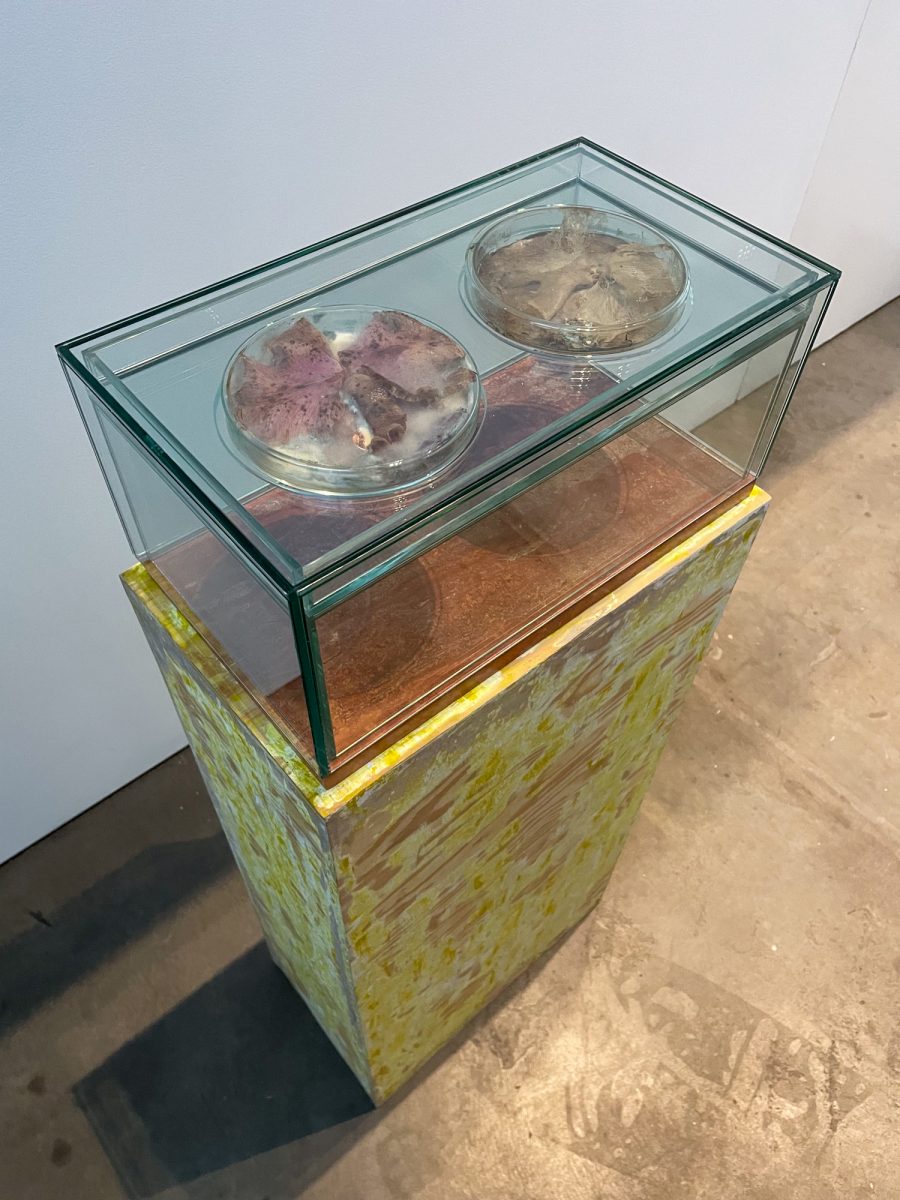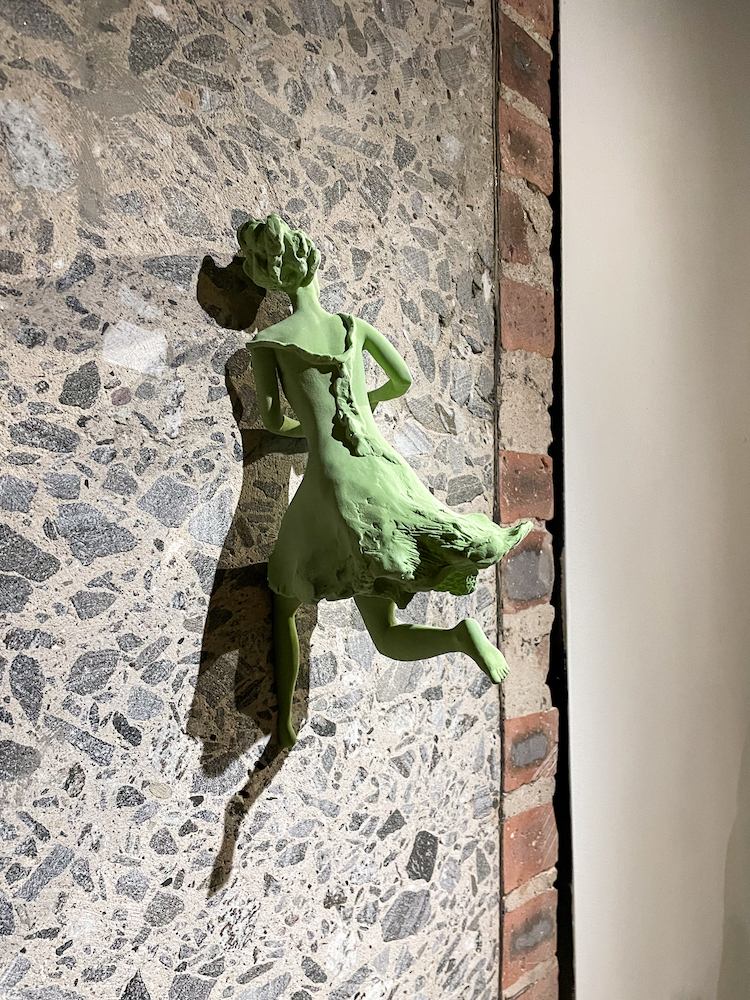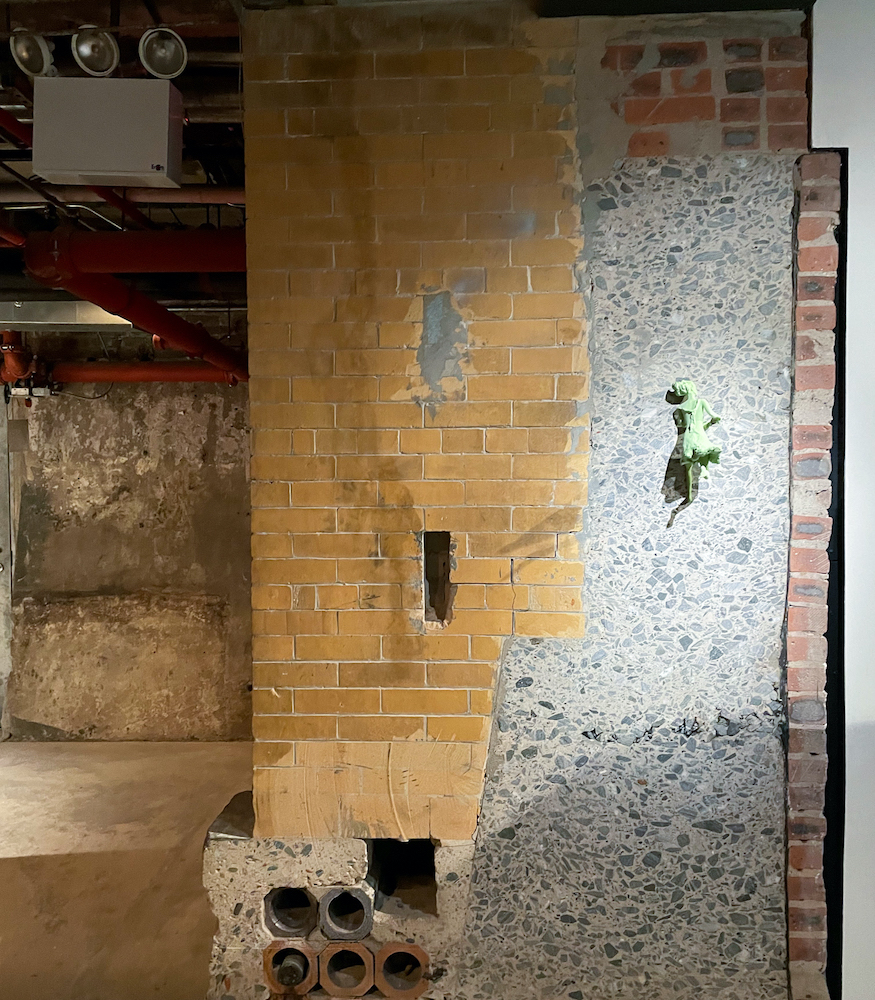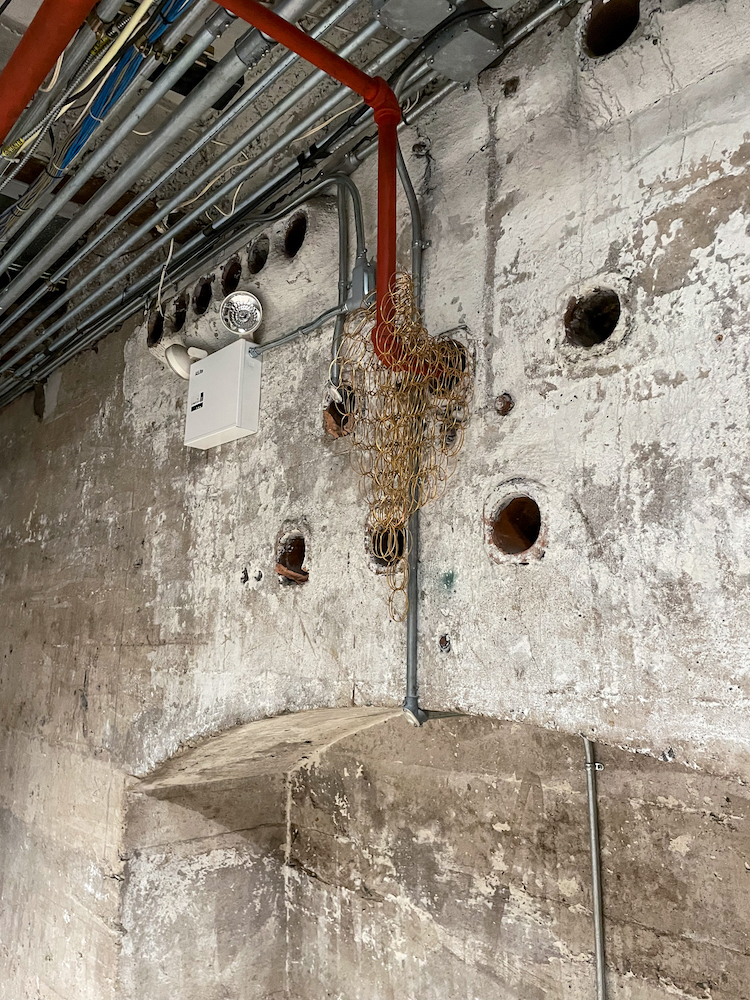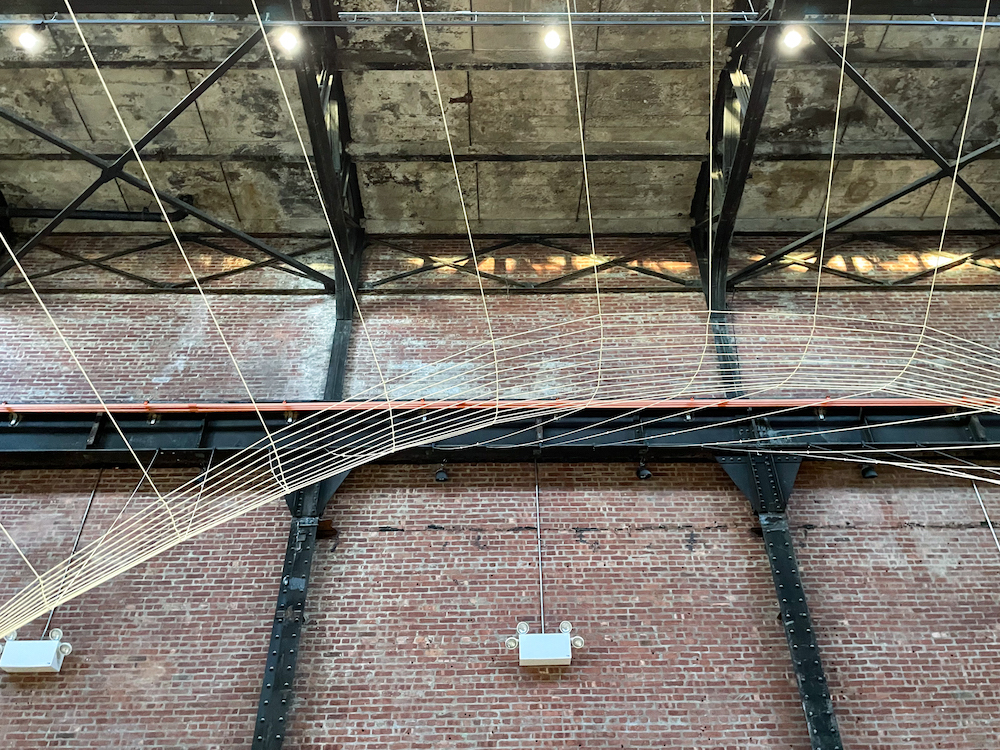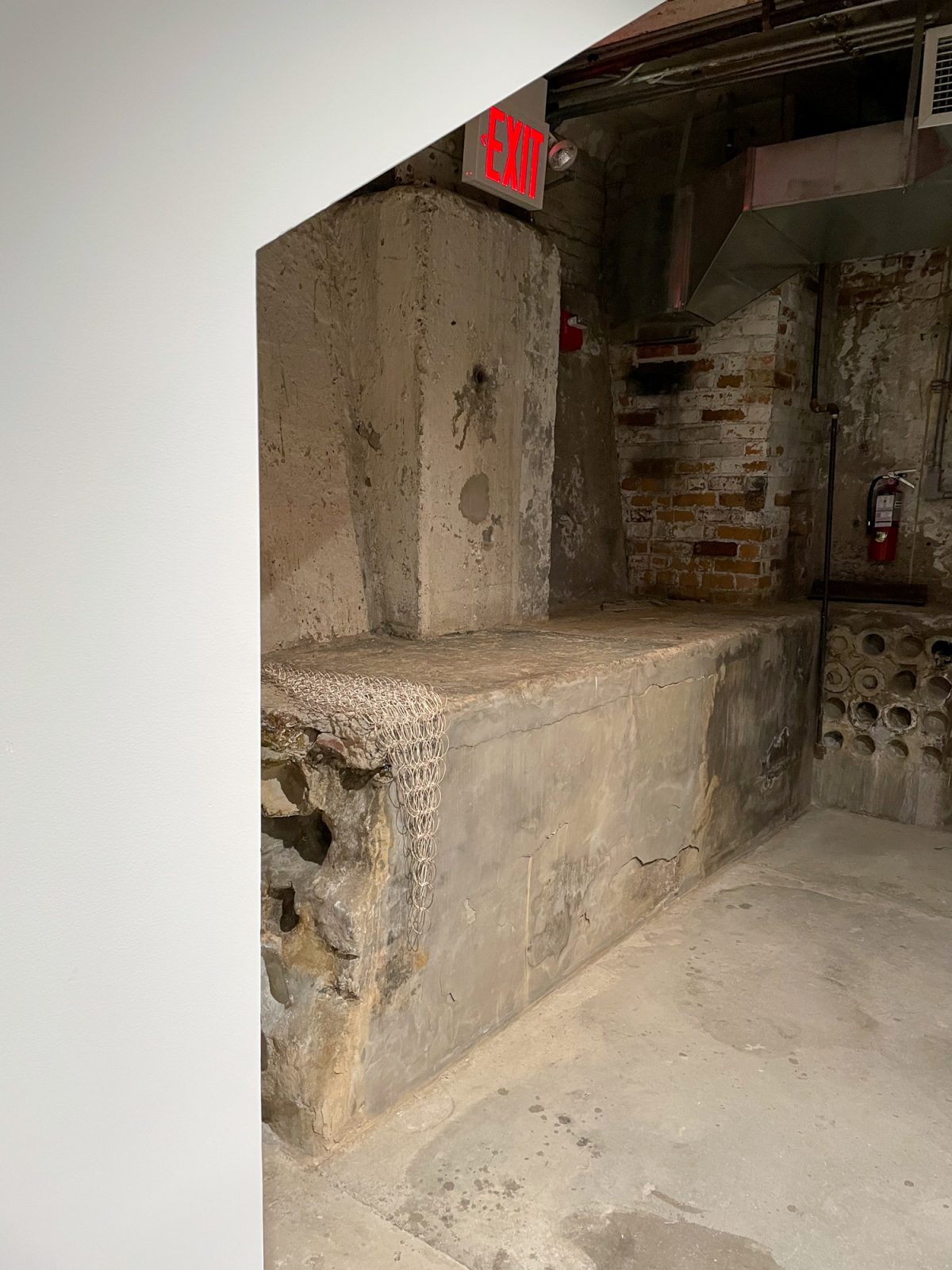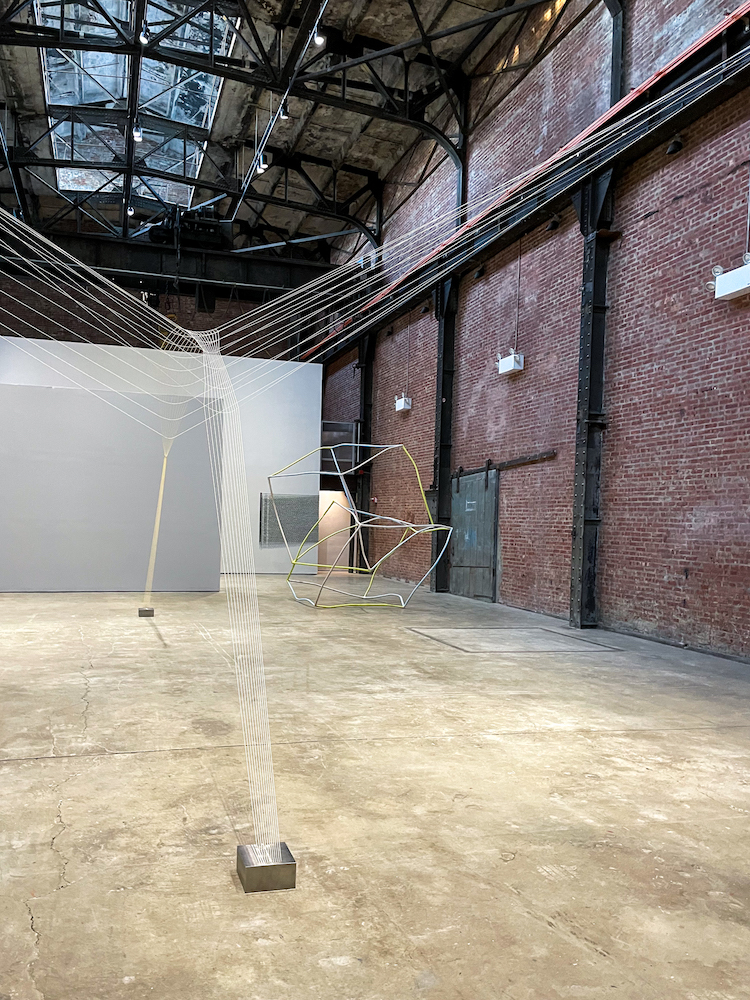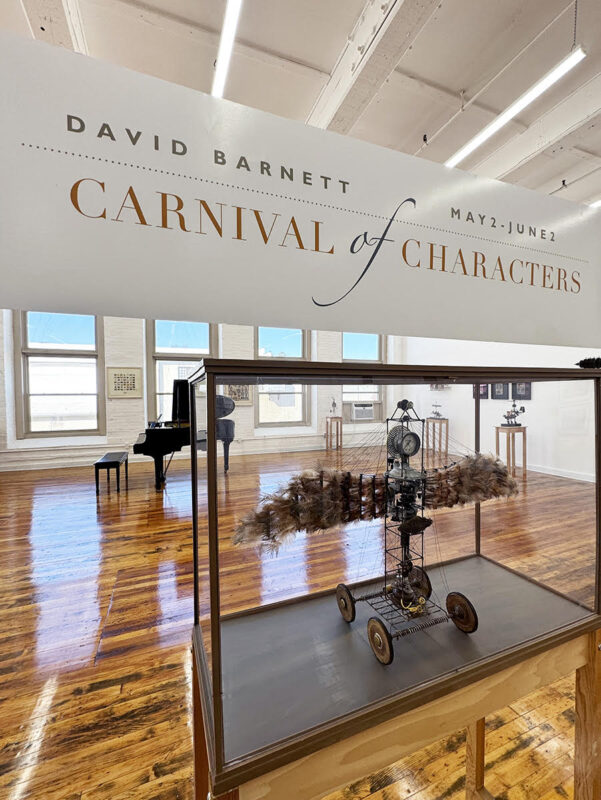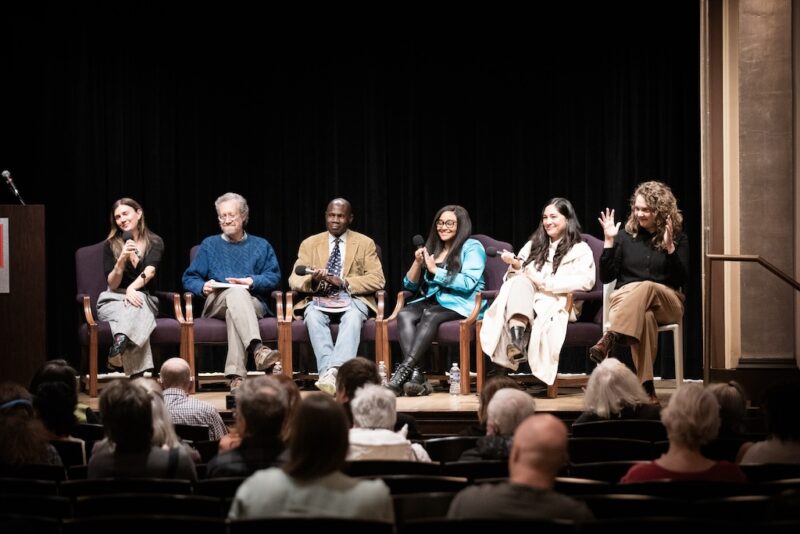I approach the mechanical box affixed to the metal column near a corner in the gallery. Flick! The Leeson motor swirls on with a low hum. As I adjust the speed to 10, the roughly 2-inch-diameter steel tube begins to turn with a sizable steel ball hanging off a chain welded to its top like a tetherball. The motor is attached at the bottom, and the fixture is chained to the wall to prevent escape. As I increase the speed to 40, I observe a large gash in the drywall from the ball swinging around at chest height. It could easily do more damage.
Thud! Thud! Clink! Clink! Clink!
The sound of metal bashing into the wall and then itself is louder than expected. I cautiously look at the front desk attendant and turn the speed down, but they don’t bat an eye. They have informed me that Liz Larner’s “Corner Basher” (1988) is interactive, but it still feels wrong to be destroying the white wall, which I have been accustomed to thinking is untouchable and pristine. The first object I meet immediately implicates me in a process of dismantling. I proceed with a heightened sense of curiosity.
Liz Larner, born in 1960 in Sacramento, plays with materials to morph and defy their expected attributes. The Los Angeles-based artist constructs her pieces from stainless steel, gauze, paper, leather, hair, ceramic, mold, and bacteria, and her subtle sense of color and form is perceptible throughout her show, Don’t put it back like it was, at the SculptureCenter in Long Island City. As if on the ebb and flow of a wave, I’m carried from work to work wanting to touch and feel the sculptures, which undulate between soft and hard, sharp and rounded, heavy and light.
